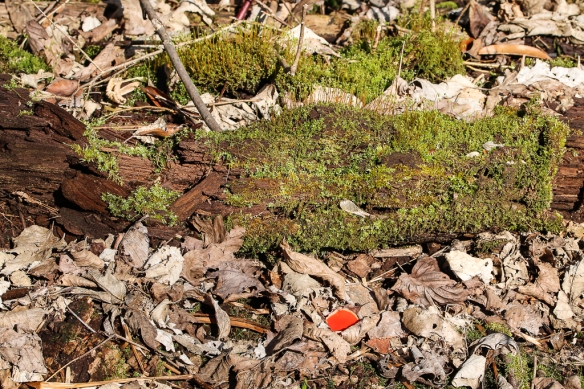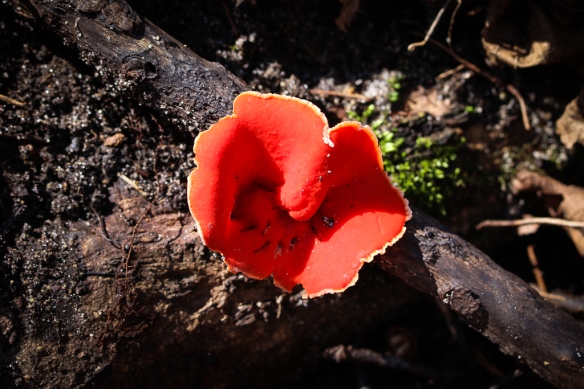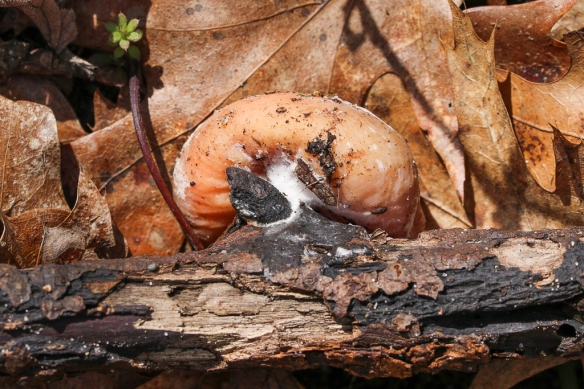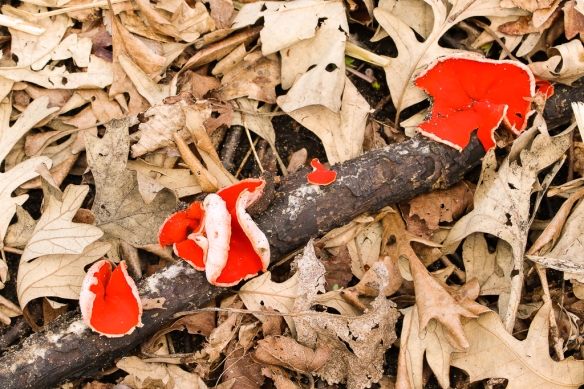It’s too cold for spring wildflowers to add their color to the forest landscape, but I spotted some very colorful fungi that looked like good substitutes. They were infrequent bursts of bright scarlet in the litter of a steep north-facing slope of a small creek that drains into the Minnesota River.

The bright scarlet color of the scarlet elf cup (or scarlet elf cap) mushroom made them easy to spot through the litter.

They sort of resemble a flower with their smooth upper surface, bright gold-tinged edges and brilliant color. These are quite small, with most of these “flowers” (i.e., fruiting bodies) measuring about 1-2 inches across.

The only ones I found were firmly attached to rather small branches and buried well in the litter. They appear to start out as spherical cups that open into flatter, plate-like shapes. The interior is a bright scarlet, but the exterior is a dull orange that matches the leaves in which they rest.

The mushroom (fruiting body that will release spores) is attached firmly by a basal stalk to a small, semi-decomposed branchlet.

One branch had multiple scarlet cup colonists, showing the stages of development from cup-shaped to plate-shaped. It looks like the right-most mushroom has been nibbled on by some mammal, and it’s neighbor may have been almost completely consumed.
These small, saprobic fungi colonize decaying wood, especially beech,willow, elm, or hazel branches, and appear in late winter or early spring when temperatures are cool and litter moisture is high. It is one of the first mushrooms to appear in the spring and may last as long as temperature and moisture conditions hold. Being fairly rare in the forest, it doesn’t seem to be harvested as food, but rather as an ornamental decoration, although native Americans dried and ground it to use as a styptic agent to reduce bleeding.
Do you wonder why this little mushroom is so intensely red? (OK, so I did, and had to look up a good reason for its color.) The red color is derived from carotenoid pigments (the ones that make maple leaves yellow and orange in the fall) and some believe that these pigments enable the mushrooms to trap light energy that then heats them above ambient temperature, promoting their growth on those cold spring days.
